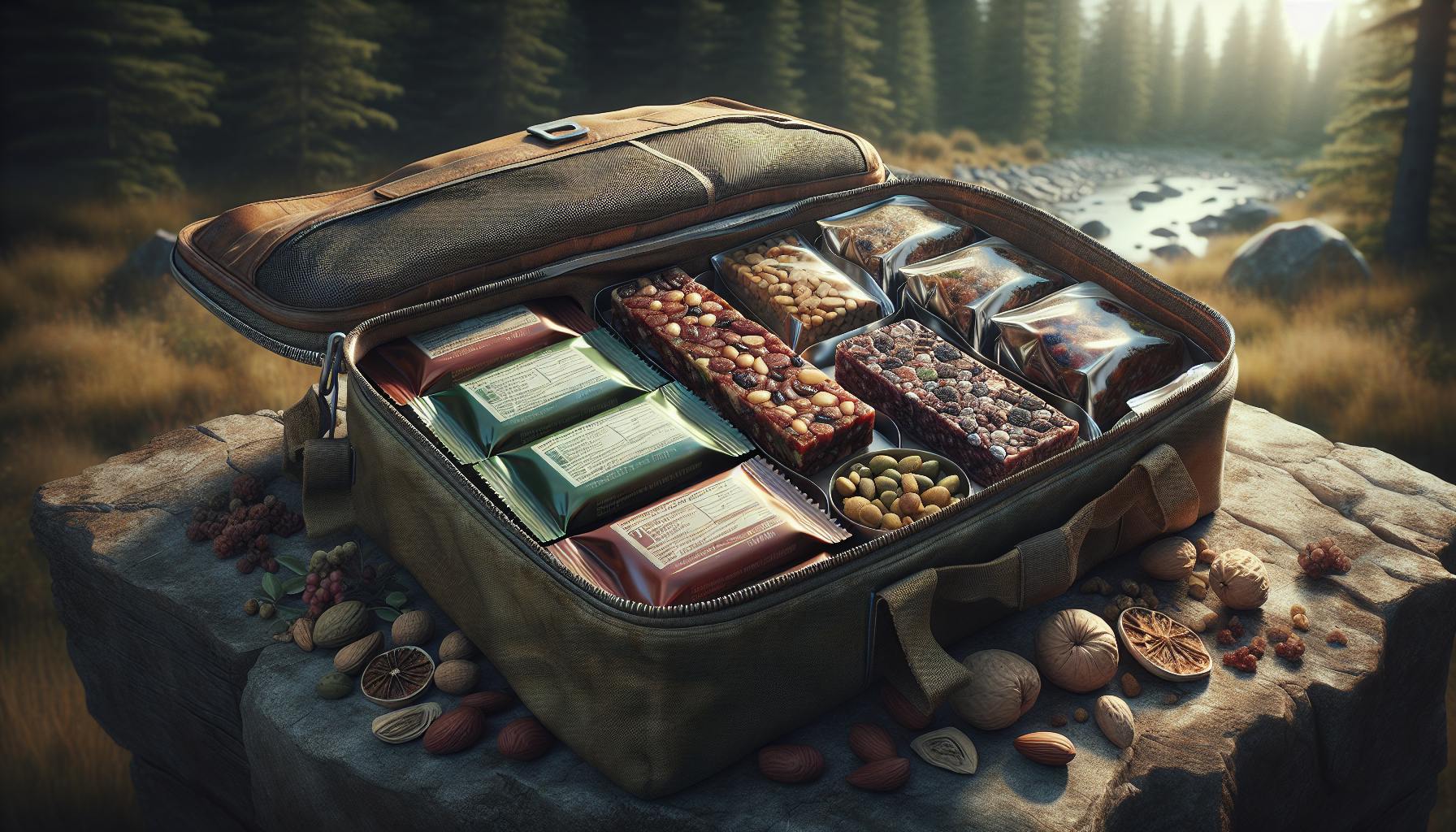When facing a medical emergency in the wilderness, most would agree having basic first aid supplies is critical for survival.
It turns out a simple survival bandana can provide effective emergency first aid in over a dozen wilderness medical situations...
In this guide you'll discover the many ingenious ways to utilize survival bandanas for medical emergencies when outdoors. You'll learn specific techniques for emergency wound care, bleeding control, and injury immobilization using just a bandana. We'll also explore features to look for when selecting the best survival bandanas, plus everyday carry options to ensure you have this versatile tool ready for wilderness first aid needs.
Introduction to Survival Bandanas
Survival bandanas, often referred to as wilderness survival bandanas, are versatile cotton bandanas that can be utilized for a variety of emergency and survival purposes, from improvised first aid to shelter building. Their durable, ultra absorbent fabric and compact size make them a versatile addition to any emergency preparedness kit.
Defining Wilderness Survival Bandanas
Survival bandanas are typically made from a lightweight yet durable cotton fabric. They are larger in size than a traditional bandana, usually measuring around 36 x 36 inches. The oversized dimensions allow them to be employed in a variety of ways, from creating a makeshift shelter to stopping bleeding during an injury.
Some key features of survival bandanas include:
- Ultra absorbent fabric that can soak up moisture, blood, and dirt
- Versatile size large enough to use as a sling, tourniquet, or shelter
- Durable construction that resists ripping or fraying
- Wicks moisture to keep the user cool and dry
- Compact and lightweight for easy portability
With these useful features, it's easy to see why survival bandanas are considered indispensable additions to any emergency or wilderness first aid kit.
Key Features and Benefits
There are several benefits that make survival bandanas stand out:
-
Absorbency - The fabric is specially designed to wick moisture and soak up liquids quickly. This makes them ideal for stopping bleeding or soaking up sweat.
-
Versatility - Their large size and durable fabric allows them to be fashioned into tourniquets, slings, bandages, water filters, shelter, and more.
-
Compact Size - When folded up, survival bandanas take up very little space, making them easy to pack in first aid kits and bug out bags.
-
Affordability - High quality survival bandanas can be purchased very inexpensively, especially considering their myriad uses.
-
Ease of Use - Even those without medical or survival training can quickly fashion a bandana into an emergency bandage, sling, or shelter. Their simplicity makes them usable by anyone.
With these well-rounded advantages, it's clear why survival bandanas deserve a spot in every emergency preparedness kit.
Emergency First Aid Applications
When injuries occur in wilderness or disaster scenarios, survival bandanas can provide improvised first aid. Some key emergency uses include:
-
Tourniquets - Bandanas can be fashioned into effective tourniquets to slow or stop bleeding from limb injuries by applying pressure.
-
Bandages - Their ultra absorbent fabric makes survival bandanas ideal for bandaging wounds, securing dressings, or protecting injuries.
-
Splints - Bandanas can help support injured limbs by creating improvised splints when no medical splints are available.
-
Slings - Arms, shoulders, and wrists can be supported in makeshift bandana slings. This helps immobilize injuries for healing.
With their versatility and absorbency, survival bandanas offer effective improvised first aid options when medical supplies are limited. They deserve consideration by anyone focused on emergency preparedness.
Using Survival Bandanas for First Aid Emergencies
Survival bandanas can be invaluable for administering first aid in emergency situations where professional medical care is unavailable. Their versatility allows them to be utilized in a variety of ways to treat injuries and medical issues.
Stop Bleeding with Bandanas
- Directly apply pressure to wounds using a folded bandana to help stop bleeding. Tightly tie knots in the fabric over the wound to create an improvised pressure bandage.
- For severe bleeding that cannot be controlled with direct pressure, a bandana can be used as a tourniquet. Twist the fabric tightly around the injured limb above the wound and securely tie a knot. Only use a tourniquet as a last resort.
* Survival bandanas are useful for controlling bleeding as they are highly absorbent and can apply focused pressure due to their compact size when folded or rolled.
Immobilize Injuries
- Tie knots in the corners of a bandana to create a makeshift sling to support an injured arm. This helps immobilize the limb to prevent further damage.
- Carefully wrap a bandana around sprains, fractures, or dislocations to protect and immobilize injuries. Pad with additional fabric if possible to minimize discomfort.
- Bandanas can be wrapped around splints made of rigid materials such as branches or boards found in the wilderness. The fabric helps pad and secure the splint.
Wound Care
* Boil Colter Co bandanas in water to sterilize them before using them to clean wounds, help prevent infection.
- Cut or tear survival bandanas into strips to use as dressings for wounds. The fabric can help absorb fluid and protect injuries.
- Replace soiled bandana dressings regularly to keep wounds as clean as possible. Having multiple bandanas on hand helps facilitate regular wound care.
Choosing the Best Survival Bandanas
When selecting a survival bandana, there are a few key criteria to consider in order to choose the best option for emergency preparedness.
Fabric Considerations for Best Survival Bandanas
The fabric is one of the most important factors when selecting a survival bandana. You'll want to look for the following fabric properties:
-
Cotton - Cotton is very durable and ultra absorbent, making it ideal for uses like stopping bleeding or soaking up water. 100% cotton is best.
-
Moisture wicking - Some synthetic fabric blends have moisture wicking properties to keep you dry. This can be useful in hot weather.
-
Avoid cheap fabrics - Cheap, super thin fabrics may fall apart easily. Focus on quality over price when it comes to survival gear.
Size and Construction
-
Standard size - The most common survival bandana sizes are 40" x 40" or larger. This provides ample fabric for improvising bandages, tourniquets, slings, etc.
-
Double stitched, sealed edges - Well-constructed bandanas have double stitching on the edges to prevent fraying. Sealed edges also boost durability.
Special Features
Some specialty survival bandanas offer extra features:
-
Antimicrobial properties - Some fabrics have antimicrobial treatments to inhibit bacteria growth. Useful for first aid.
-
SPF ratings - Bandanas with built-in SPF can provide sun protection.
While special features can be useful, don't sacrifice fabric quality and construction for bells and whistles. Focus on finding a durable, high quality cotton bandana first and foremost.
sbb-itb-b932644
Everyday Carry Options for Survival Bandanas
Survival bandanas are extremely versatile for wilderness and disaster preparedness. However, their usefulness is limited if they are not readily accessible when needed. Here are some convenient everyday carry (EDC) methods to keep your survival bandana within reach.
Pocket or Bag Carry
Neatly folding a Forager Bandana allows packing it into a cargo pocket, backpack compartment, EDC pouch, or other bag. This enables lightweight portability so your survival bandana is available at a moment's notice. Consider carrying in a quick-access location like a pant pocket or exterior bag pocket.
Belt Loop or Carabiner
Use a small carabiner clip or tie some paracord to securely fasten your Colter Co bandana to a belt loop, molle webbing, or backpack strap. This keeps your survival bandana readily accessible and visible as an EDC item. Ensure the carabiner or knot is tight enough to avoid losing the bandana.
Neck Kerchief
Tying your Head for Survival Bandana around your neck serves multiple purposes. It absorbs sweat and cools the neck while allowing rapid access for emergency first aid use. Consider a loose knot or safety pin for easy untying. Just ensure it does not catch on anything hazardous.
Recommended Survival Bandana Products
Survival bandanas are versatile items that every prepper should have in their emergency medical kits. When choosing a survival bandana, look for ones made from durable, antimicrobial fabrics that can serve a variety of first aid needs. Here are some top options to consider:
Forager Bandana: The Versatile Survival Choice
The Forager Bandana is a rugged 42" cotton bandana available in multiple colors. It's made from a moisture-wicking fabric designed for outdoor use. Key features:
- Tightly woven fabric is soft yet durable
- Moisture control material keeps you cool and dry
- Large 42" size works great for first aid needs like tourniquets and slings
- Variety of colors to match your gear
The Forager survival bandana is a versatile choice perfect for your bug out bag or EDC kit.
Colter Co Bandana: Durability for the Outdoors
Colter Co makes an oversized 40" tactical survival bandana constructed from durable ripstop fabric. It's ideal for rugged outdoor use. Features include:
- Ripstop fabric is extremely durable to withstand heavy use
- Fast-drying and moisture-wicking material
- Oversized design provides more fabric to work with
- Made in the USA from military-grade materials
The Colter Co survival bandana is built to handle anything the wilderness throws at you. It's a reliable choice for EDC, camping, and emergency preparedness.
Head for Survival Bandana: Compact and Antimicrobial
The Head for Survival Bandana provides an ultra compact 30" bandana coated with an antimicrobial treatment. Key attributes:
- 30" size folds up smaller than a credit card
- Embedded antimicrobial tech inhibits bacteria growth
- Made from soft, stretchy microfiber material
- Lightweight and comfortable for everyday carry
If you need a highly portable survival bandana for your EDC or med kit, the Head for Survival Bandana delivers antimicrobial protection in a tiny package.
Having a few survival bandanas on hand lets you improvise solutions for medical emergencies. Choose ones that match your needs for durability, packability, moisture wicking, antimicrobial properties, and other key features. Brands like Forager, Colter Co, and Head for Survival offer quality options to include in your preps.
Conclusion
Survival bandanas are versatile, affordable tools that can be invaluable for emergency first aid preparation. Here are some key takeaways:
-
Quality cotton bandanas, especially in larger sizes, make durable slings, bandages, and tourniquets. The fabric's breathability and absorbency also help treat wounds.
-
It's wise to pack multiple bandanas in survival kits - they're useful for first aid, signaling, filtration, and more. Consider storing some pre-made into tourniquets.
-
Practice essential bandana skills like making arm slings and tourniquets ahead of time. Having the muscle memory will make application faster and more effective when needed.
-
Attach a bandana to your backpack or belt loop with a carabiner. Keeping one easily accessible can save precious seconds in an emergency.
-
Explore creative uses for bandanas like water filtration, sun protection, and containing small items. Their versatility makes them well suited for multiple survival needs.
Having quality cotton survival bandanas and knowing how to utilize them can significantly boost your capacity to administer emergency first aid. They are an affordable and compact addition to any survival medical kit.


